AGE Reader によって皮膚AGEsの蛍光を測定することにより
2型糖尿病患者での細小血管合併症発症の危険を予測できるかを調べた
オランダの研究を紹介します。
Diabetes Care. 2008 Mar;31(3):517-21. 掲載論文のアブストラクトです。
RESEARCH DESIGN AND METHODSのところ3行目に
autofluorescence readerと書かれているのが、AGE Readerのことです。
以下の訳文のイタリック表示と色文字は、訳者によるものです。
また、引用原文中のイタリック表示と色文字も、訳者によるものです。
原文のURLは一番下に貼り付けておきます。
皮膚自己蛍光測定 :
細小血管合併症発症の危険がある2型糖尿病患者を
確認するツールとして
目的:
皮膚自己蛍光測定とは、糖ストレスと酸化ストレスの蓄積を意味する
終末糖化産物(AGEs)の組織蓄積レベルを非侵襲的に測定するものである。
皮膚自己蛍光と2型糖尿病合併症が関連すること、
また、その測定が2型糖尿病における全死亡率と心血管死亡率に対する
予測となることが最近の研究で明らかになってきた。
この研究では、2型糖尿病での細小血管合併症の発症予測における
皮膚自己蛍光測定の意義を検討した。
方法:
最初にコントロール良好な2型糖尿病患者973例を
皮膚自己蛍光測定器で非侵襲的に測定した。
追跡終了時に生存していた881例における網膜症、神経障害、
(微量)アルブミン尿の発症との関連を調べた。
結果:
平均3.1年の追跡期間後、何らかの細小血管合併症、
神経障害および(微量)アルブミン尿を発症した患者では、
開始時の皮膚自己蛍光が有意に高値であった。
しかし、網膜症を発症した患者ではそうした関連は認められなかった。
多変量解析では、
何らかの細小血管合併症の発症は皮膚自己蛍光とHbA1C値で、
神経障害の発症は皮膚自己蛍光と喫煙で、また
(微量)アルブミン尿の発症は皮膚自己蛍光と性別・HbA1C値・
糖尿病罹病期間によって、それぞれ予測できることが示された。
網膜症の発症は皮膚自己蛍光測定では予測されず、
糖尿病罹病期間により予測できた。
結論:
2型糖尿病での細小血管合併症の発症が、皮膚自己蛍光を測定すると
独自に予測できることを初めて経過観察した研究である。
Skin autofluorescence :
a tool to identify type 2 diabetic patients at risk for
developing microvascular complications.
Gerrits EG, Lutgers HL, Kleefstra N, Graaff R, Groenier KH, Smit AJ,
Gans RO, Bilo HJ.
Diabetes Centre, Isala Clinics,
Zwolle, P.O. Box 10400, 8000 GK Zwolle, Netherlands.
e.g.gerrits@isala.nl
OBJECTIVE:
Skin autofluorescence is a noninvasive measure of the level
of tissue accumulation of advanced glycation end products,
representing cumulative glycemic and oxidative stress.
Recent studies have already shown a relationship between
skin autofluorescence and diabetes complications,
as well as the predictive value of skin autofluorescence
for total and cardiovascular mortality in type 2 diabetes.
Our aim was to investigate the predictive value of skin autofluorescence
for the development of microvascular complications in type 2 diabetes.
RESEARCH DESIGN AND METHODS:
At baseline, skin autofluorescence of 973 type 2 diabetic patients
with well-controlled diabetes was noninvasively measured
with an autofluorescence reader.
The aggregate clinical outcome was defined as the development
of any diabetes-associated microvascular complication of 881
surviving patients, which was assessed at baseline and
at the end of follow-up.
Single end points were the development of diabetes-associated
retinopathy, neuropathy, and (micro)albuminuria.
RESULTS:
After a mean follow-up period of 3.1 years,
baseline skin autofluorescence was significantly higher
in patients who developed any microvascular complication, neuropathy,
or (micro)albuminuria but not in those who developed retinopathy.
Multivariate analyses showed skin autofluorescence as a predictor
for development of any microvascular complication along with A1C,
for development of neuropathy along with smoking,
and for development of (micro)albuminuria together with sex, A1C,
and diabetes duration.
Skin autofluorescence did not have predictive value
for the development of retinopathy, albeit diabetes duration did.
CONCLUSIONS:
Our study is the first observation of skin autofluorescence measurement
as an independent predictor of development of microvascular complications
in type 2 diabetes.
原文はこちら http://www.ncbi.nlm.nih.gov/pubmed/18039805?dopt=Abstract
その他のAGE Reader関連記事
AGE READERが測定するのは
抗糖化サプリメント モニター試験進行中
日本薬学会発表 および 抗糖化サプリメント関連記事
薬学会、行ってきました
抗糖化ドクターズ・サプリ 陽の目を見る
抗糖化についてのご質問 E.Wさんより
創立2周年記念、AGE Readerによる皮膚AGEs測定の実際は こちらから

当ブログの重要点『抗糖化』等に関してはこちらにまとめてあります。
なお、図表および内容の引用は固くお断りいたします。










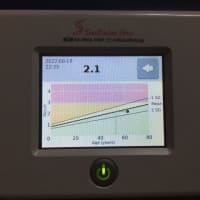

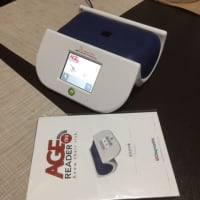
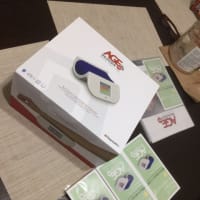
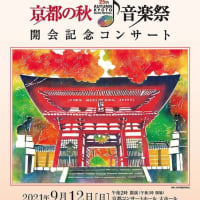


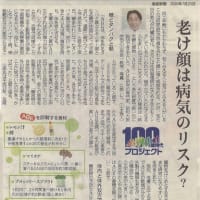
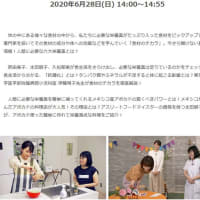
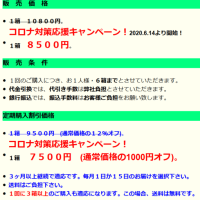
※コメント投稿者のブログIDはブログ作成者のみに通知されます